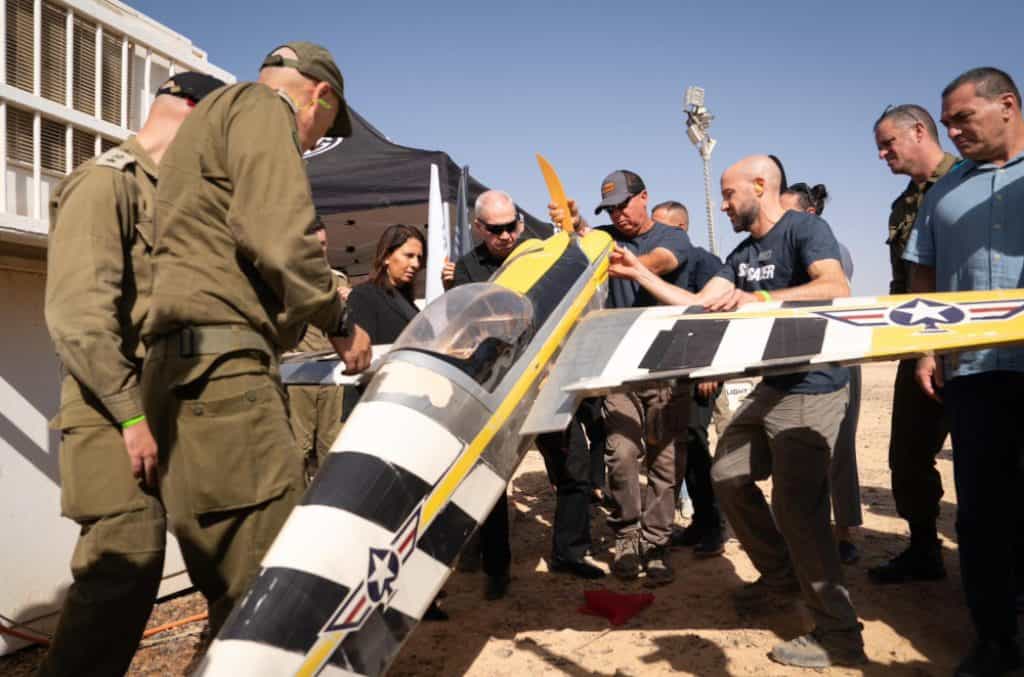
On October 21, the Israel Defense Forces (IDF) intercepted five unmanned aerial vehicles (UAVs) that were detected flying over an area of the Mediterranean Sea. The IDF did not disclose where it intercepted the drones or what area they may have threatened, though it specified they were intercepted before crossing into Israeli territory. It is one of a number of recent high-profile drone incidents, including a Hezbollah UAV attack on an IDF training base that killed four soldiers and wounded 60 on October 13.
In a major escalation, Hezbollah also carried out a drone attack targeting a coastal residence of Israeli Prime Minister Benjamin Netanyahu on October 19. Hezbollah claimed responsibility for this attack on October 22, and Israeli media confirmed the drone struck the residence. The UAV was caught on camera flying close to an Israeli combat helicopter, with the drone’s profile clearly visible against the sky. It was similar to the UAVs the Houthis used to target Tel Aviv in July and other types employed by Iranian-backed groups.
The drone threat is increasing. Hamas, Hezbollah, the Houthis, and other Iranian-backed groups, such as Shiite militias in Iraq, have been using UAVs over the past year to strike at Israel. Each of these groups has employed drones in a different way or to target various areas of the country. The types of drones used by the Houthis, Iraqi militias, and Hezbollah appear to have similar capabilities and characteristics, and they are all influenced by Iran’s backing for these groups.
For instance, the Iranians based HESA Shahed 136 drones with the Houthis in Yemen as early as 2021. This same model was later exported to Russia to be used against Ukraine. The Houthis have also used other UAVs linked to Iran for attacks over the last decade. Iranian-backed militias have employed drones to target US forces in Erbil, Iraq, and Kataib Hezbollah used a UAV to kill three US service members in Jordan in January. The war that Hamas launched on October 7, 2023, has led to various Iranian-backed groups increasing these types of attacks on Israel from multiple fronts.
Israel takes the drone threat seriously, although confronting it on multiple fronts is difficult. In Gaza, the threat from Hamas UAVs was largely eliminated in the first months of the war as the IDF targeted most Hamas commanders linked to the group’s “aerial” units. In addition, the IDF has targeted Hezbollah members linked to that group’s UAVs, though Hezbollah has launched hundreds of kamikaze drone attacks on Israel since October 8, 2023. During the week of October 14 to 21, the IDF said it intercepted 30 UAV attacks targeting Israel, and Hezbollah likely continues to possess a significant arsenal.
On October 22, the IDF said that “over the past day, the IAF [Israeli Air Force] struck approximately 230 Hezbollah and Hamas terrorist targets in Lebanon and the Gaza Strip, including three command centers belonging to the Hezbollah Aerial Unit (Unit 127), which, among other things, is responsible for launching UAVs toward the State of Israel.” Early in the morning on October 21, a drone from Iraq targeting Israel was intercepted by the Israeli Air Force. Another attack from Iraq was intercepted the previous day, in addition to a drone from Syria on October 19.
The use of drone attacks by Israel’s Iranian-backed adversaries has become an everyday occurrence. For instance, on Friday, October 19, the IDF said that “sirens sounded at 3:35 in the northern Golan area” and “a UAV that was fired from the east was identified crossing into Israeli territory from the area of Syria.” On October 18, the IDF also intercepted a drone over the Mediterranean, and “two UAVs that approached Israeli territory from Lebanon were intercepted by the IAF.”
On October 14, Israeli Defense Minister Yoav Gallant attended a demonstration showcasing several defense-industry technologies that Israel can use to confront the UAV threat. Because drones have different shapes, sizes, and capabilities, from small commercially available quadcopters to models the size of small planes that have a range of 2,000 miles, the types of systems needed to stop the threat run the gamut from missiles to guns and jammers. Gallant took part in the demonstration alongside Israeli Minister of Innovation, Science and Technology Gila Gamliel, Director General of the Israel Ministry of Defense Major General (Res) Eyal Zamir, IDF Deputy Chief of Staff Major General Amir Baram, and Brigadier General (Res) Dr. Daniel Gold, head of the Directorate of Defense Research and Development at the ministry.
The event took place in southern Israel. “After analyzing the trial results, the Ministry of Defense will select several technologies to enter an accelerated development and production process,” the ministry said. “The UAV threat is a multi-arena threat originating from Iran, which supplies UAVs to Lebanon, Yemen, and Iraq, and even launches them itself,” Gallant said.
Other officials present noted how countering the drone threat is a national priority, and the defense establishment and Israel’s defense industry are committed to this goal. This isn’t news to Israel’s defense industry, which already makes various systems to counter UAVs. However, the recent precision attacks have been a renewed wake-up call for additional defensive capabilities.







